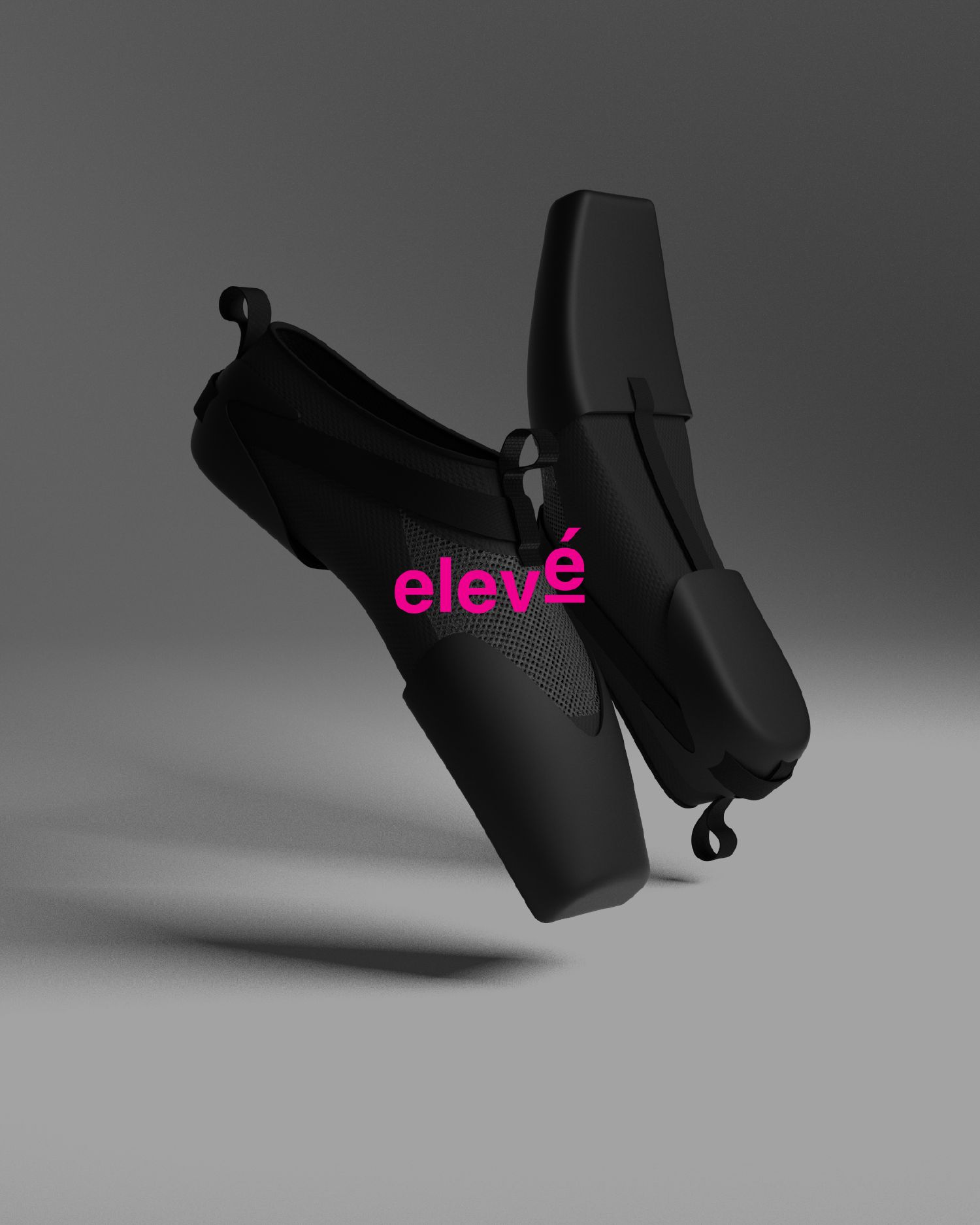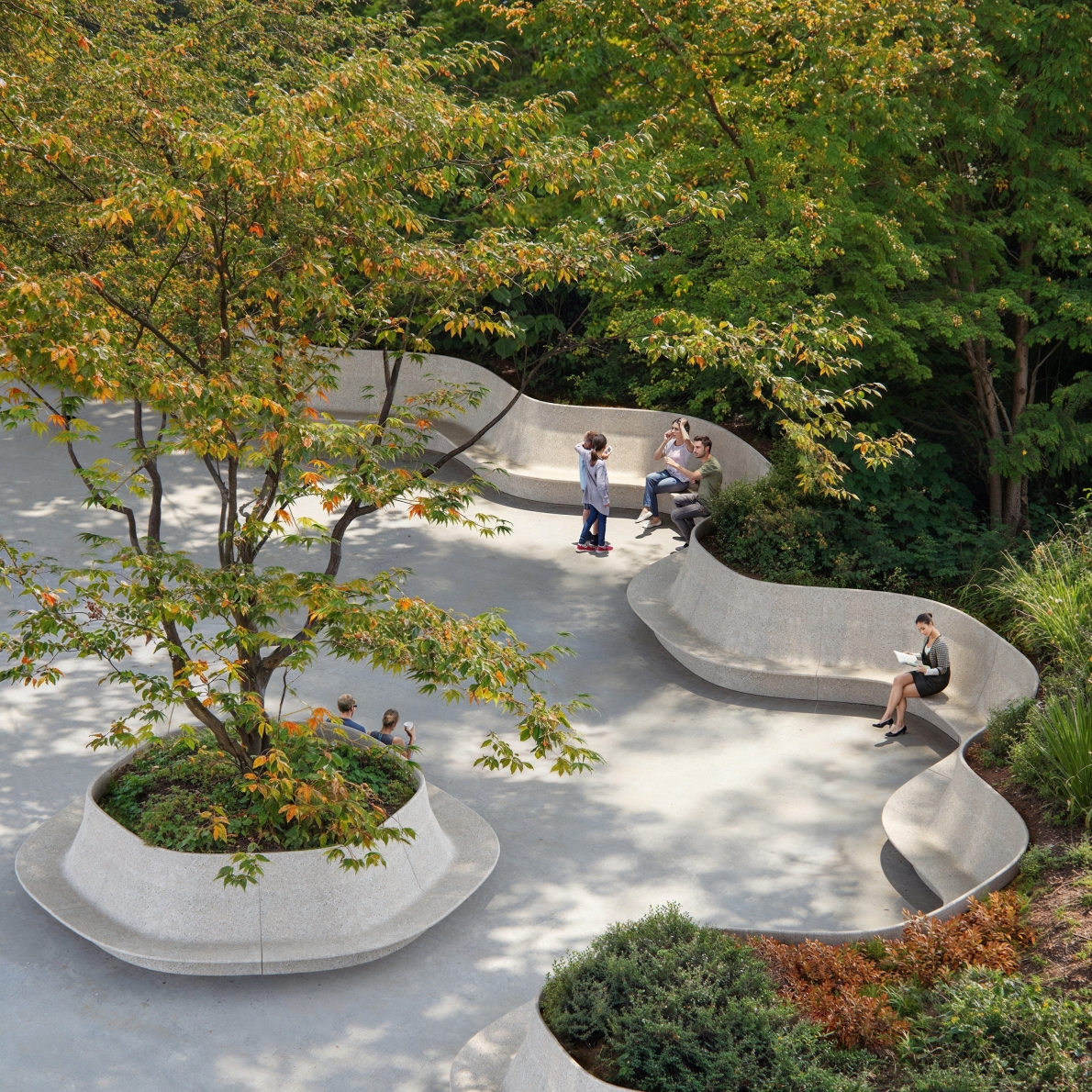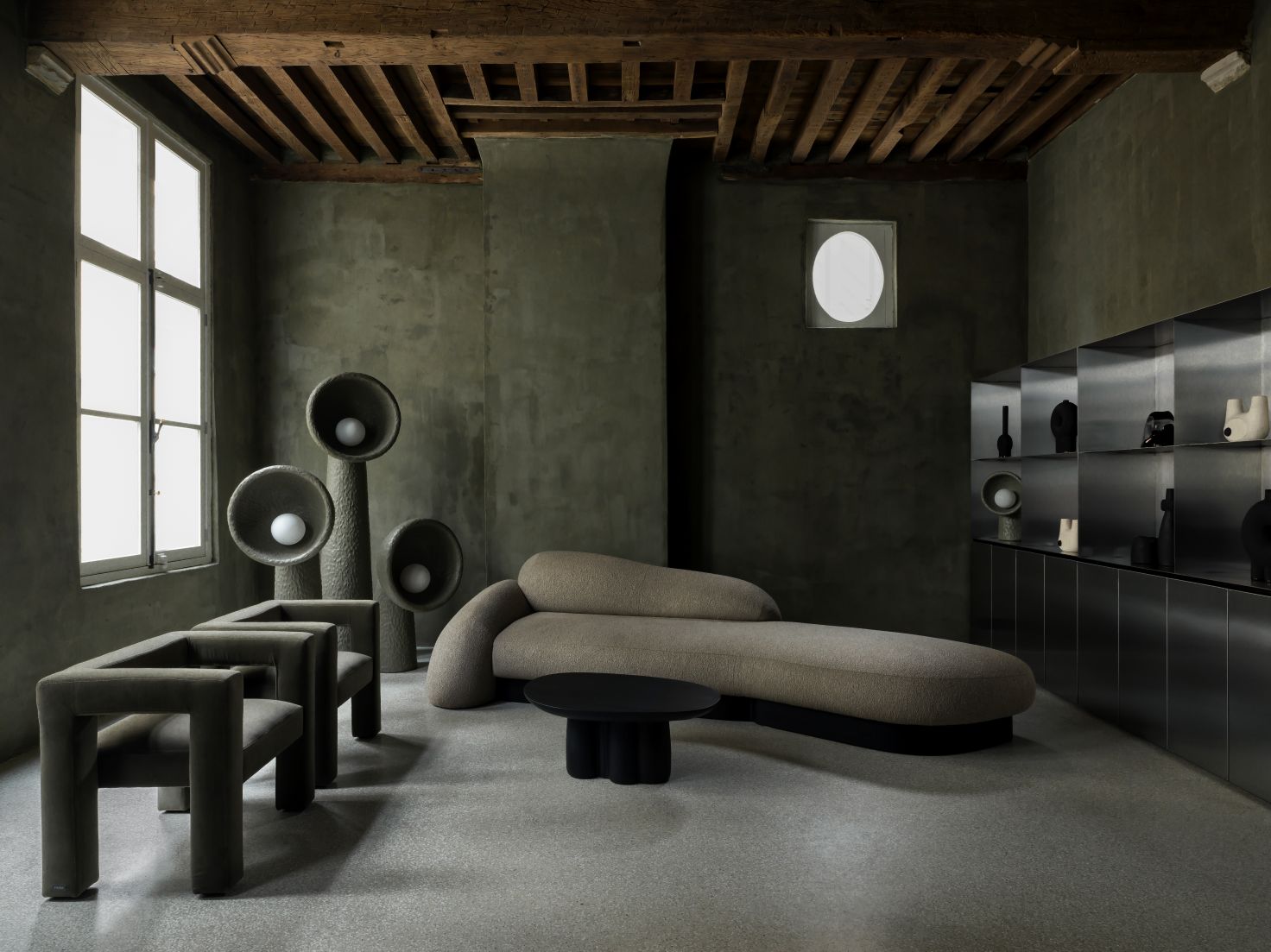When John Helf set out to design a pointe shoe, he wasn’t trying to reinvent ballet; he was listening. What started as a conversation with a dancer-friend turned into elevé, a training shoe that supports proper form, strengthens muscles, and dares to make ballet a little less painful for beginners.
Currently a prototype developed at the University of Oregon under the guidance of Professor Rachael Rosalie Volker, elevé blends adjustable elastic straps with sweat-wicking materials and 3D printed TPU cages. It’s ballet, but engineered with empathy, precision, and a quiet push toward progress.
Fresh off winning Emerging Sport Apparel Designer of the Year at the FIT Sport Design Awards, Helf tells us more about the thinking behind elevé, designing with unfamiliarity, and what pointe shoes and soccer cleats have in common.
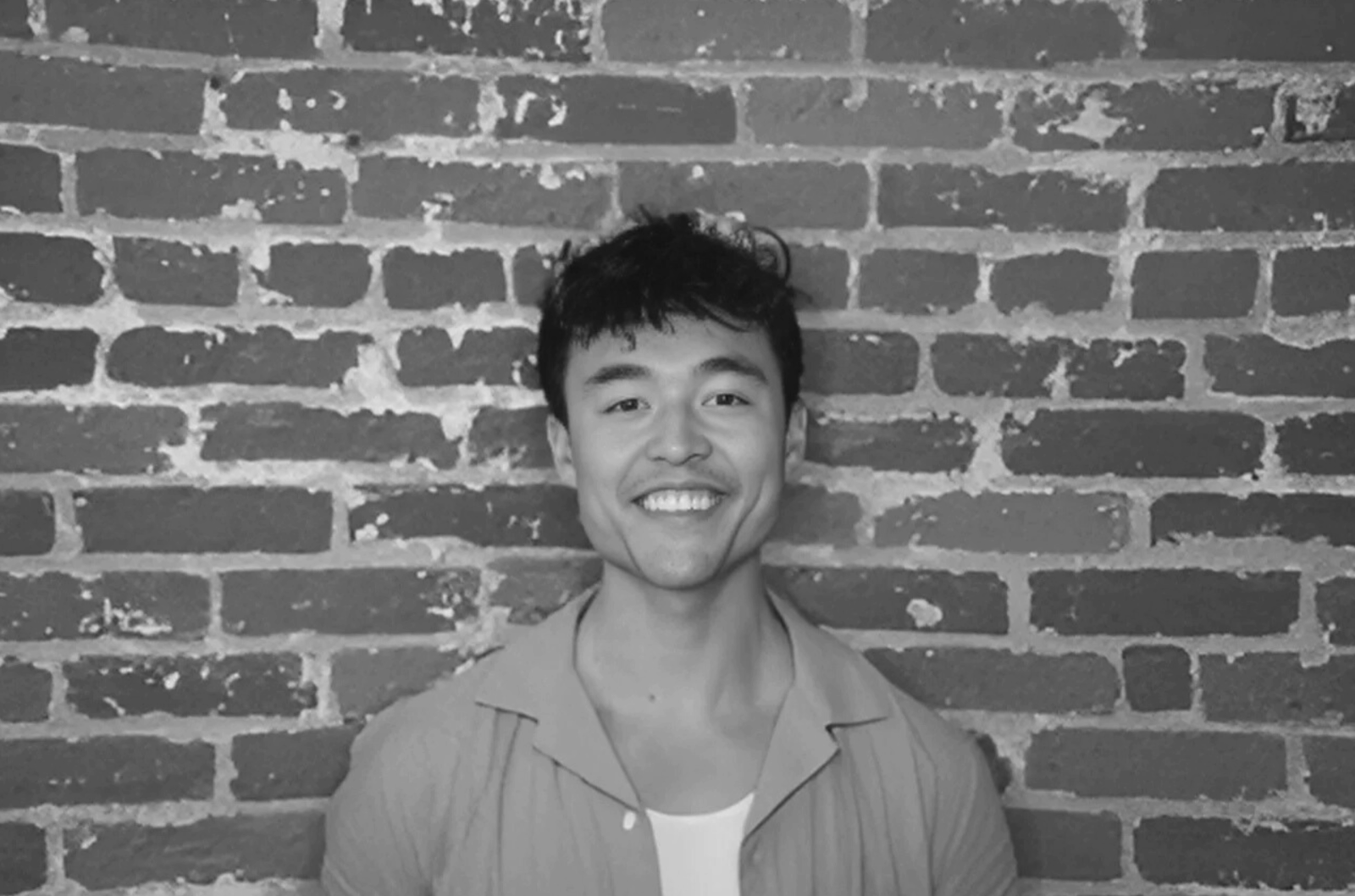
Can you tell us a bit about your background? What led you to study design?
From a young age, I juggled a passion for storytelling and sports. One of my favorite examples is trying to wear the flashiest soccer shoes during recess while still sticking to my school’s dress code. While I initially pursued filmmaking at the University of Wisconsin–Madison, I realized I craved a more active, empowering creative outlet—one I could not only see but also feel and experience through the physical journey of hard work, grit, and struggle. Footwear design became the perfect blend of craft, performance, and narrative, and that realization led me to pursue formal training at the University of Oregon.
What would you say is your personal design philosophy?
Empathy first—always. I start every design by centering the athlete and aiming to empower individuals to own their story. I believe great design listens deeply before it speaks. My job is to create products that not only perform at a high level but also reflect who the user is and who they’re becoming. It’s about helping someone reflect on their journey and feel supported in it. Elevé, in particular, taught me to lean into my own unfamiliarity, from ballet, in this case, as a bridge to empathy and growth, and to create a product that felt like a collaboration more than a prescription.
What is the inspiration behind elevé? Was there a specific moment, conversation, or experience that sparked the idea?
The idea for elevé came out of a conversation with a friend who was both a ballet dancer and instructor. She spoke about how painful and intimidating pointe shoes were—not just for her personally, but especially for the young dancers she taught. That stuck with me—the idea that a product so central to a craft could be both a badge of honor and a barrier to entry. I wanted to reimagine that experience and create a shoe that helps dancers elevate their personas—not just physically, but mentally and emotionally.
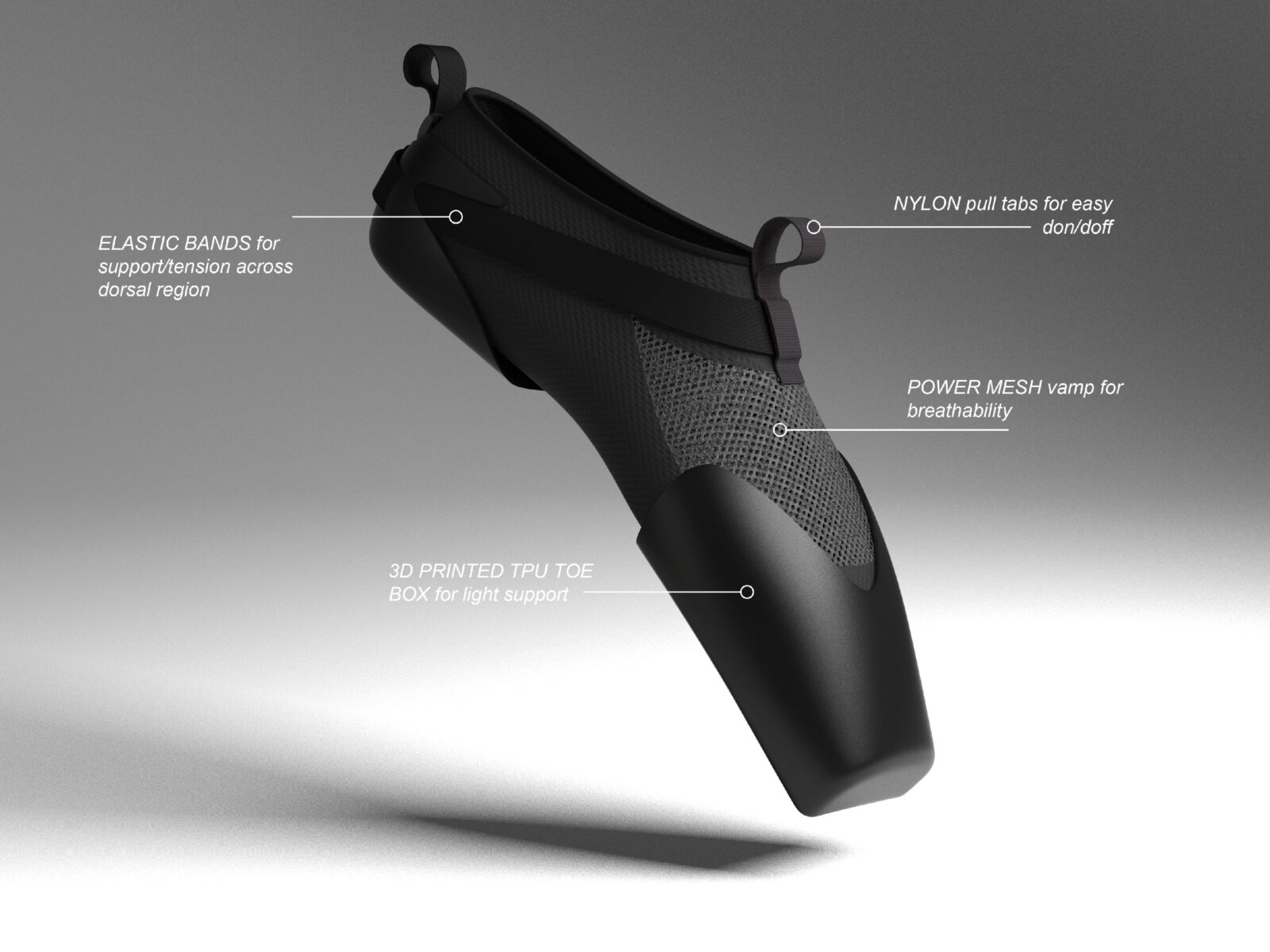
What was the development process like?
The development of elevé was a fast, three-week sprint grounded in empathy and athlete insight. I started by listening closely to a ballet dancer’s needs, which guided every design decision. I researched ballet biomechanics and common injuries, then rapidly prototyped different tensioning methods to support proper form. At the same time, I explored fit and aesthetics, aiming to create a pointe shoe that felt both elegant and energized. It was about honoring ballet tradition while quietly enhancing performance through thoughtful, enthusiastic design.
What were some of the biggest challenges you encountered while designing this shoe?
One of the biggest challenges was balancing tradition with innovation. Pointe shoes carry a deep cultural and aesthetic legacy, so I had to approach change with care, designing something that felt familiar to dancers but offered new forms of support. Technically, developing tensioning systems that guide proper form without restricting movement was complex. And with such a short timeline, refining both function and elegance simultaneously pushed me to prototype quickly, listen deeply, and trust the process.
Your design supports new dancers in learning proper form while preventing overuse injuries; have you had any feedback so far?
Yes—after seeing elevé, Dani Rowe, Artistic Director of Oregon Ballet Theatre, invited me to present the project to the OBT Company. Sharing the shoe with professional dancers was an incredible experience. The feedback was encouraging—they saw elevé‘s potential to support young dancers and improve early training. But more importantly, they challenged me to think bigger. Dani and the dancers offered insight into how the design could also serve as a recovery product and emphasized the importance of continued customization in ballet footwear. Even something as simple as offering a left and right shoe, which isn’t common in traditional ballet footwear, could make a meaningful difference. It was a humbling and motivating reminder that this space holds so much opportunity for thoughtful innovation—and that good design begins with conversation.
Ballet often has deeply gendered traditions and expectations. Was inclusivity something you considered in the design of elevé?
Absolutely. For me, inclusivity meant bringing athlete-informed, innovative design into an art form historically shaped by restriction and tradition. With elevé, I aimed to create something that honored ballet’s rich legacy while also feeling fresh, energized, and empowering for today’s dancers. The product itself is designed to lower the barrier to entry, offering support, guidance, and a sensory experience that helps more individuals overcome hesitation and take their first steps on pointe with confidence.
Congratulations on being named Emerging Sport Apparel Designer of the Year! What does this recognition mean to you as a young designer?
Thank you! I’m incredibly honored and humbled. To me, this recognition is a reminder that sport design isn’t just about performance—it’s about exploring overlooked spaces, respecting but questioning tradition, and creating with intention. It’s so cool to see how the more we listen, the better we can design.
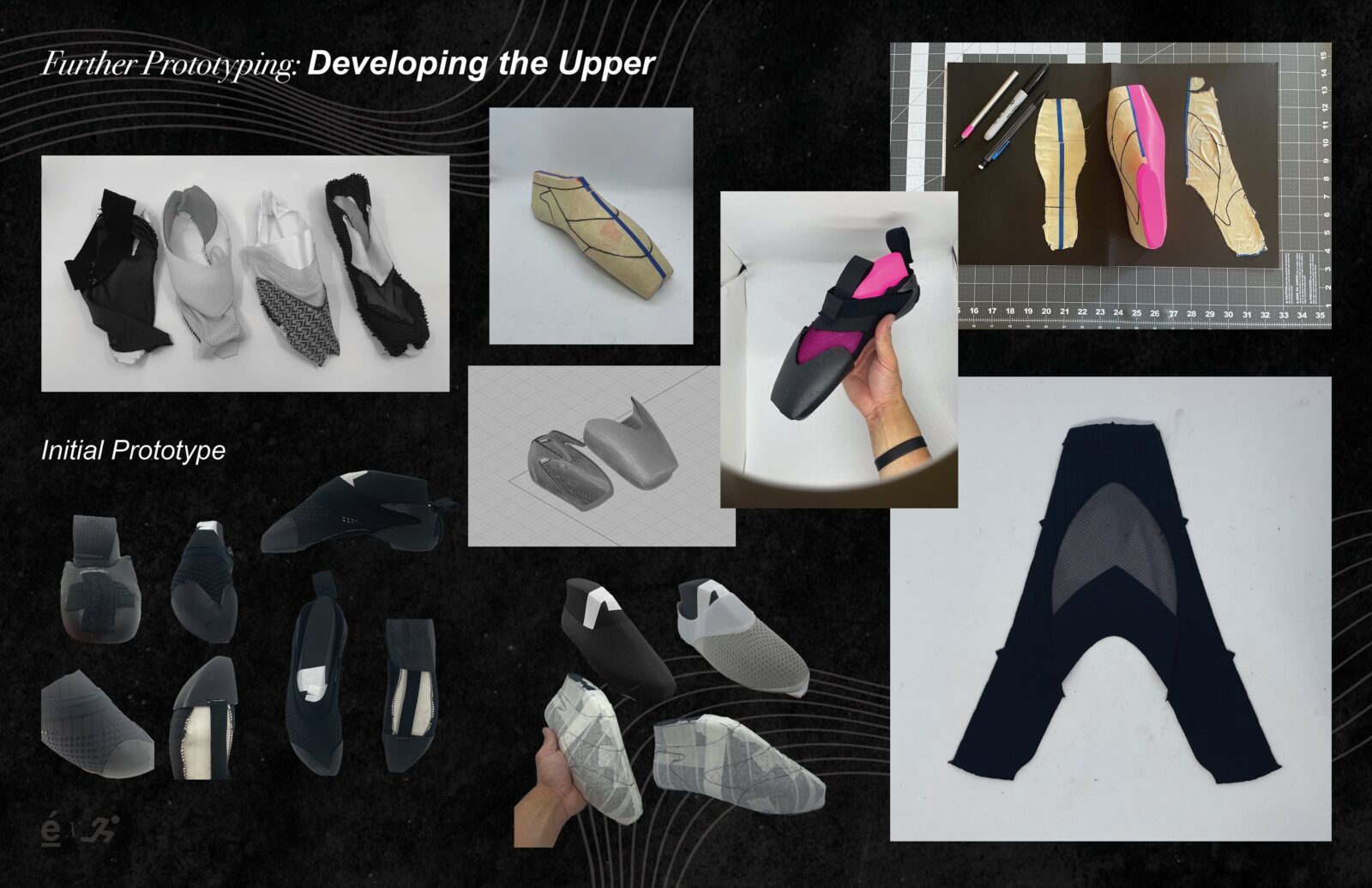
Looking ahead, what do you envision for your future?
I aim to empower people to embrace their stories—whether on stage, in the gym, at church, or at work—by helping them lean into their insecurities and find strength through movement and action. Recently, I was fortunate to land a design internship at Under Armour, but looking forward, I hope to contribute to the footwear industry as it continues to embrace deeper storytelling, refined craftsmanship, and the celebration of niche athletes with powerful, personal narratives. Ultimately, I want to lead projects that fuse meaningful storytelling, inspiring athletes, and emotional impact into performance-driven design.






